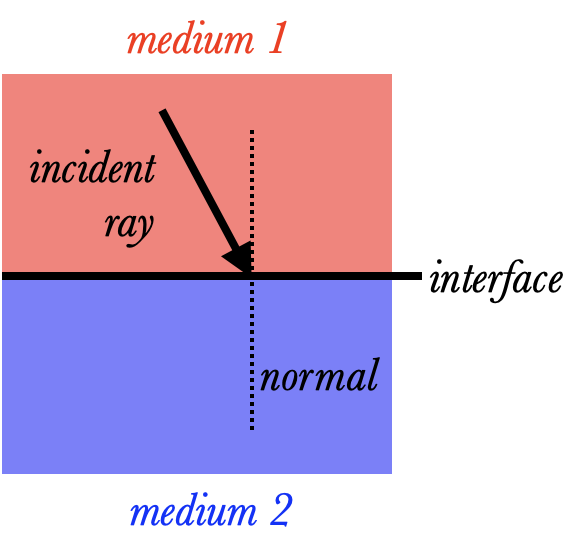2.
How Light Travels
Light rays obey a variation on Newton's First Law, to wit:A light ray will travel in a straight line at constant speed forever, until it hits something.
By "something", we generally mean that light is moving in one medium (vacuum, air, water, etc) and then it comes in contact with a different medium (glass, for instance, or a wooden table, or a dust particle). When this occurs, three things can happen:
- Some of the light may be absorbed by the new medium, and disappears, its energy turned into a different form. This is how objects can have different colors by the way: a green sweater mostly absorbs light that is not green, and so what is left looks green to us.
- Some of the light may be reflected back into the old medium, in a different direction.
- Some of the light may be transmitted into the new material.

Some vocabulary:
- The surface of contact between the two materials is called the interface between the materials.
- The ray travelling through the first medium, until it hits the interface, is called the incident ray.
- If we draw a line through the place the incident ray hits, which is perpendicular to the interface, we call that the normal of the interface. We will always measure angles from the normal, and light which hits the surface and is reflected or transmitted will always cross to the other side of the normal in the process.